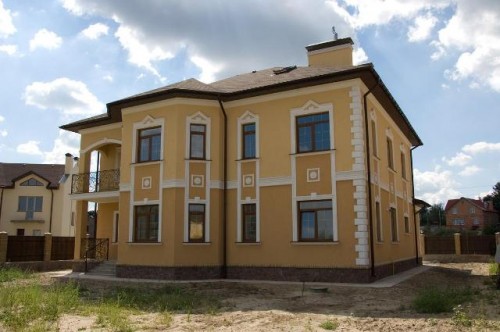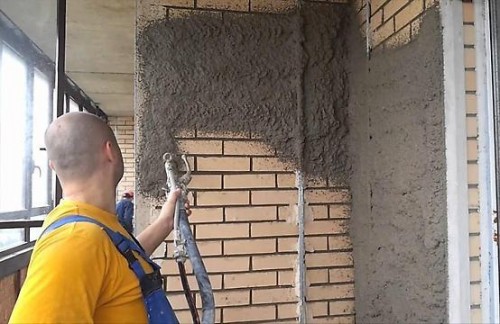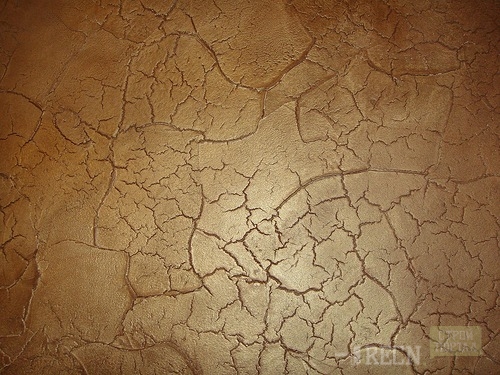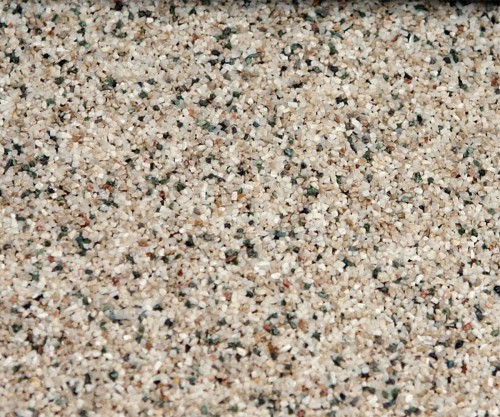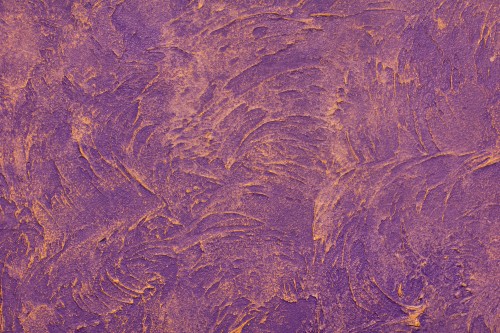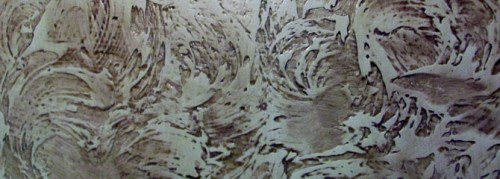
Stucco Parotyped: Material Features Building materials
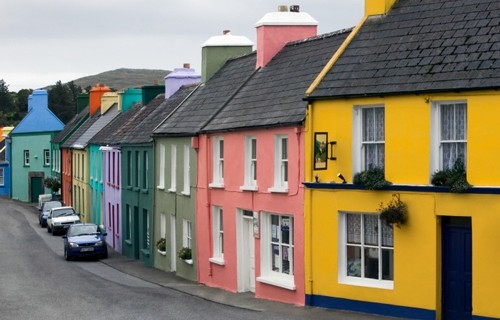
For the finishing of the facade of buildings today there are many materials, but vapor-permeable plaster enjoys the greatest popularity. Its advantage is that condensate does not accumulate indoors, and the design serves for many years.
Content
Plaster for aerated concrete
So that cracks do not appear on the aerated concrete, it needs to be secured from carbonization shrinkage, from the effects of moisture and air penetration. Plaster fits well as protection. It can or correct, or at all, spoil the walls.
For aerated concrete walls one of the meaningful characteristics, the vapor permeability of plaster, its thickness and the ratio of the thickness of the inner and outer layer is considered. It is necessary that the steam, entering the wall through the plaster inside the room, went out without obstacles to the outside. In this embodiment, the walls are able to "breathe", if the pair does not go out or settles from the inside of the walls, then after a while due to temperature fluctuations and due to the fact that the moisture is freezing, it melts, cracks appear, the plaster appears, and Inside it is formed mold.
If there are no calculations, then you can use the experienced master and make plaster so that the outside layer is twice thinner than inside. For example, if the plaster is 1 cm with a thickness of 1 cm, then it should be 2 cm thick inside it. Parley-permeable plaster for aerated concrete should not have a thick layer, a maximum of 2 cm inside the building. The plastered wall is painted only by facade paints, which are also different vapor permeability.
Rules for holding plaster works
The erroneous belief that plaster is only sand, cement and water. It must have certain properties: for example, plasticity, damage resistance, good contact with the base and appearance. But just to purchase high-quality material will be little, you need to use it correctly:
- When working with stucco, you need to monitor the temperature in the room. It should be from 5 to 30 degrees.
- Before proceeding with plastering, you need to process the walls. The surface must be brushed from dirt and stains, if somewhere the material began to flap, then it should not clean it, the sand should not be poured from the wall. If the wall is brick and easily absorbs material, then it is necessary to progress it before plastering. If the wall is concrete or from plates that are hard to absorb moisture, then it is also necessary to be projected, but already another primer, the one that is responsible for the adhesion of two materials.
- When plastering in two layers, it is necessary to wait until the bottom layer will completely dry out and will become solid, and then apply the next one. But the next layer should be made easier than the previous one, so that he kept tight. If the first layer consists of cement plaster, then the second must be from the plaster, otherwise the plaster from cement will pull over and touches the lighter gypsum.
- After each layer of plaster, you need to walk in the primer, then the whole mass will be clingly captured and this will reduce the cost of materials. The structure of the primer is such that it can penetrate even the smallest pores of the plaster, tying separate particles among themselves. Only in the compound these two building material will provide high-quality coverage.
- On the ceiling you need to fix the reinforcing grids first, then set the beacon profiles. Then apply a mixture into one layer.
Advantages of vapor-permeable facade plaster
- Protects from moisture, but at the same time passes air, as a result, the walls "breathe".
- With this material, you can make different surface textures, it all depends on the composition and method of its use. In addition, the mixture is of different colors, all this allows you to implement the most interesting design solutions. In the plaster you can add paint, and then the coating can be turned out to be unnotioned, but have a whole palette of colors. You can improvise with patterns and textures, here the main thing is to be able to correctly apply the layer of the mixture and if necessary, then use the stencil. For example, there is a finishing material for facades - a croroede, after drying, the impression will be created that the walls are eaten by insects. Over time, you can change the texture and color of the finishes.
- There is a mixture that includes components that serve sound and thermal insulation. And some can even provide protection against radiation.
- The solution is very simple and easy to apply. If there is at least the slightest experience of the work on the construction site, then it is quite possible to fly the walls yourself.
- Price plaster. Among other materials for finishing, plaster is hardly the most profitable acquisition. Each type of mixture has its own, depending on the components.
Types of facade plaster
Based on the filler, the vapor-permeable plaster for external works can be of such species:
- acrylic plaster - can be bought in the store, as ready for work. The basis of it consists of synthetic resins and it provides the material most importantly - vapor permeability. It is suitable for all walls, except from the foamazobetone. With acrylic plaster, the walls will be given an extra moisture environment, and if somewhere liquid and accumulates, it is easy to dry on this material. The advantages of acrylic in its elasticity and resistance to temperature difference. Due to the fact that its electrostaticity is not neutral, it attracts various contaminants, but since acrylic has a low absorption, the dirt remains only outside, deeply in the pores does not penetrate and easily penetrates. To protect the material from parasites in the stucco on an acrylic basis, bocides are put;
- mineral plaster. This kind of vapor-permeable plaster for aerated concrete has the lowest price among other species. This cost is due to cement content, due to which this material is considered the most durable. In the store such plaster you can buy in the form of a powder from cement, crumbs and different components that are designed to reduce the absorption of moisture. This material is not terribly terrible, neither mold, he self-cleaning from them. But there is such plaster and a substantial minus - a limited choice of color. But the builders found output: they buy white plaster and paint its silicate paint for facade works. This paint also has its advantages: it can be painted after a couple of days after plastering the walls, besides, it does not affect the vapor permeability of the material, and the penetration of the finishes still strengthens it additionally;
- silicate plaster - it can also be attributed to mineral plaster, only the basis for it is not cement, but a potassium liquid glass. It is already sold in the finished liquid mass. Its main advantage can be considered high steaming. With the help of silicate plaster, you can treat such a surface with which the acrylic mass will not cope, for example, on the walls consisting of cellular concrete. The silicate material has a neutral electrostatic material, it means that it does not pull dust and dirt to themselves;
- silicone plaster is the most expensive type of finishing material, which is justified by the following advantages: The material is elastic, its color row is unlimited, remarkably misses couples, dust and dirt is well washed off with rainwater. What kind of plaster to choose, depends on the facade of knowledge and wishes of the owner of the house.




